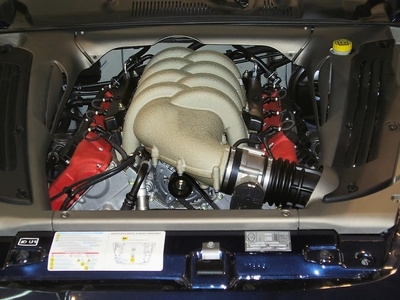
The 302 (and later 5.0L) Windsor V8 reigned for decades as the prime mover for Mustang performance, but Ford shifted the whole paradigm when it introduced the 4.6 mod (modular) motor to its ponycar chassis in 1995. These high-revving and powerful mod motors have proven themselves as an effective, if elaborate, swap for older chassis with the Windsor V8.
Ford made the mod motor in many different configurations. The highest performing three- and four-valve DOHC (dual overhead cam) engines are unanimously considered the best, but Ford isn't making them anymore, and the supply is beginning to dry up. It is for this reason that two-valve engines have become the hot swap for older chassis; although they only produce between 210 and 250 horsepower in stock form, the aftermarket's thorough embrace of the two-valve ensures that 400 to 500 horsepower is easily attainable.
The parts list for this swap is extensive so you'd be best off purchasing an entire donor car. What parts you'll need will vary by the particular year Mustang you're swapping into, but at the very least you'll need the engine, computer, wiring harness, transmission control computer and transmission (if you're using the new one), a transmission adapter plate (if you're using the original T-45 or T-5) and a new front 4.6-specific cross-member.
The mod motor is one of the most advanced V8 engine designs to date, but this can be its Achilles heel when it comes to installation. Unless you're running a turbo/supercharger, consider skipping the nightmare known as fuel injection altogether. As of June 2010, only Edelbrock sells a carburetor conversion manifold; you'll need to purchase an ignition control box to run the plugs, but dumping the fuel injection will greatly simplify installation and future tuning.
If you're rich enough and lucky enough to acquire a four-valve DOHC motor, you should bear in mind that it is significantly wider than your old 5.0L. This will necessitate cutting and reshaping the shock towers on any first-generation or Fox-chassis Mustang. You might be able to get away with modifying your stock engine and transmission cross-members, but you'd probably be better off just buying an application-specific unit.
Before launching into this swap, you need to know beforehand that it's going to be expensive: a minimum of $2,500 with the cheapest junkyard parts and all DIY fabrication, and easily $10,000 with all new stuff. As engine swaps go, this one is about a seven out of 10 on the difficulty scale. Expect a minimum of 40 to 50 hours' worth of work, and that's if you go with a carburetor, have the right transmission and are already familiar with the engine. As with any engine swap this extreme, time and money are inversely proportionate. You can either pay a lot of money to get it done quickly, or save cash by doing and fabricating everything yourself.